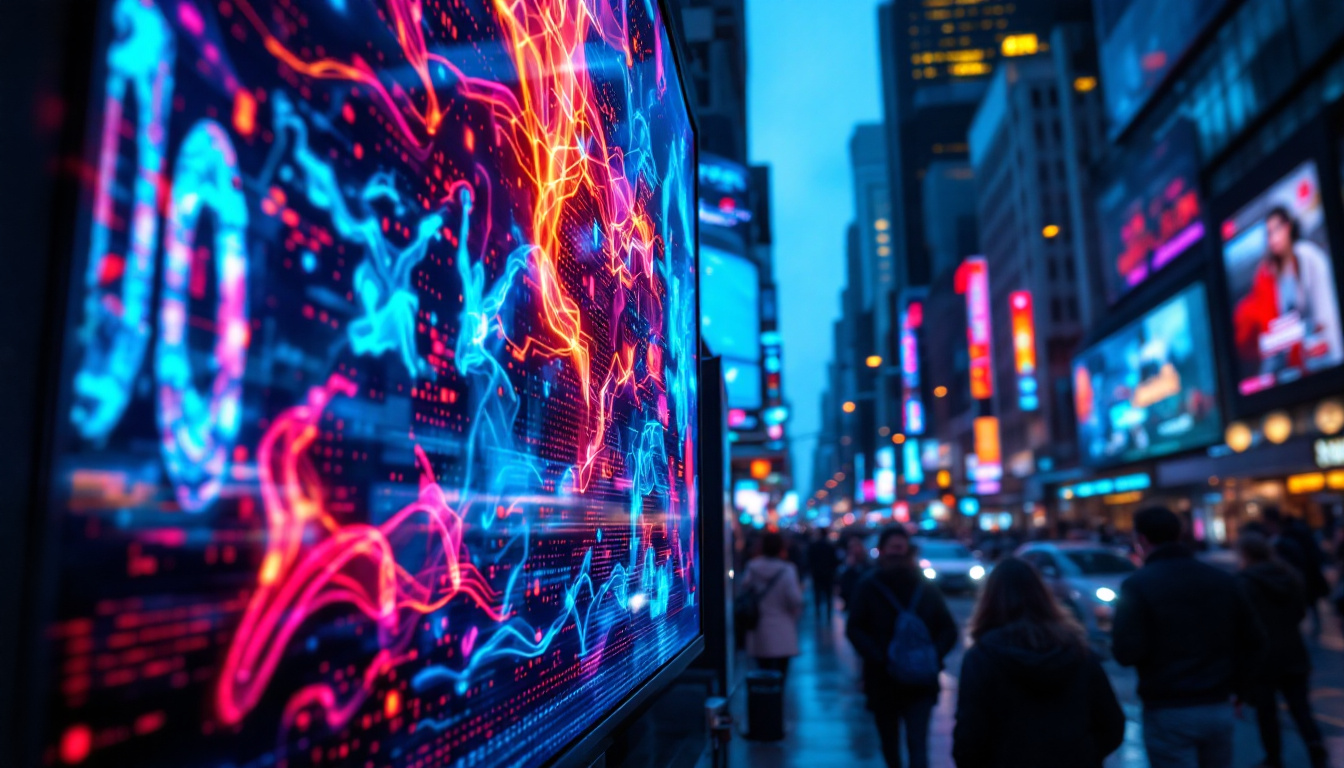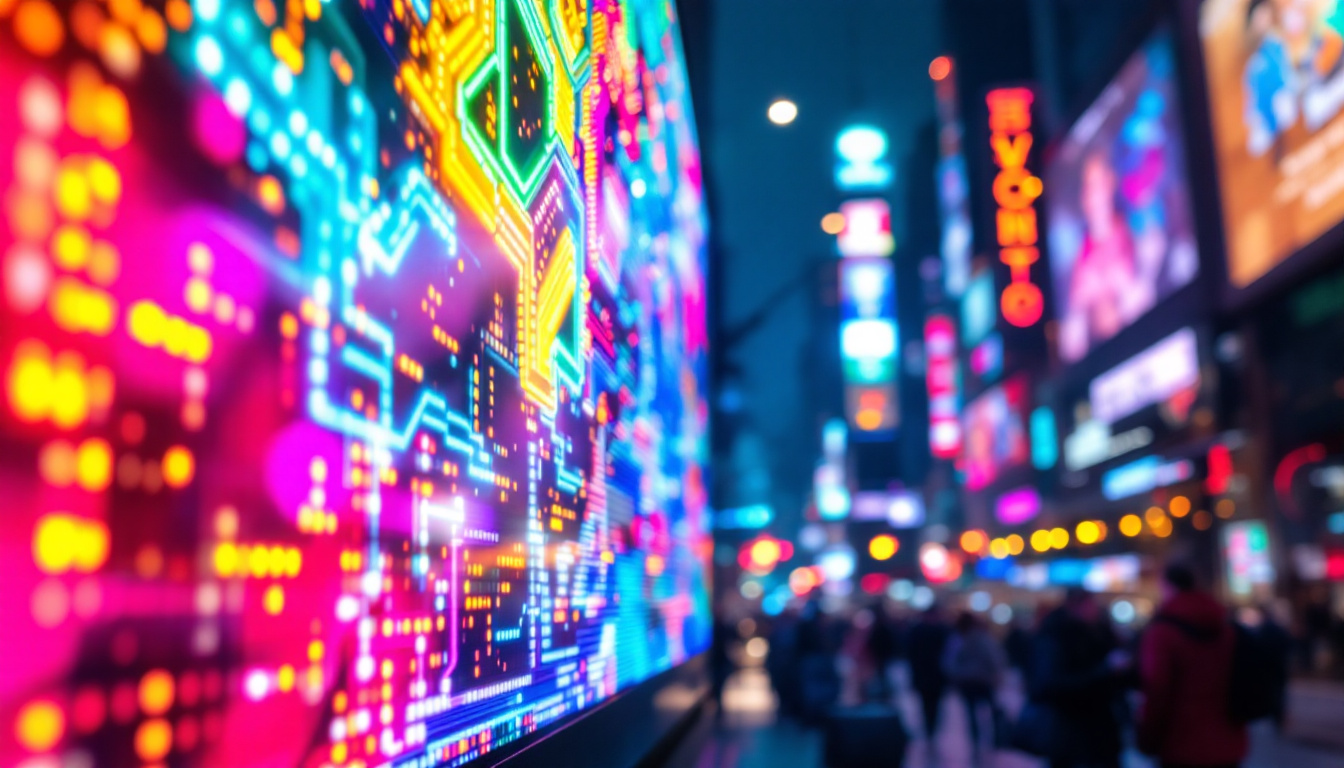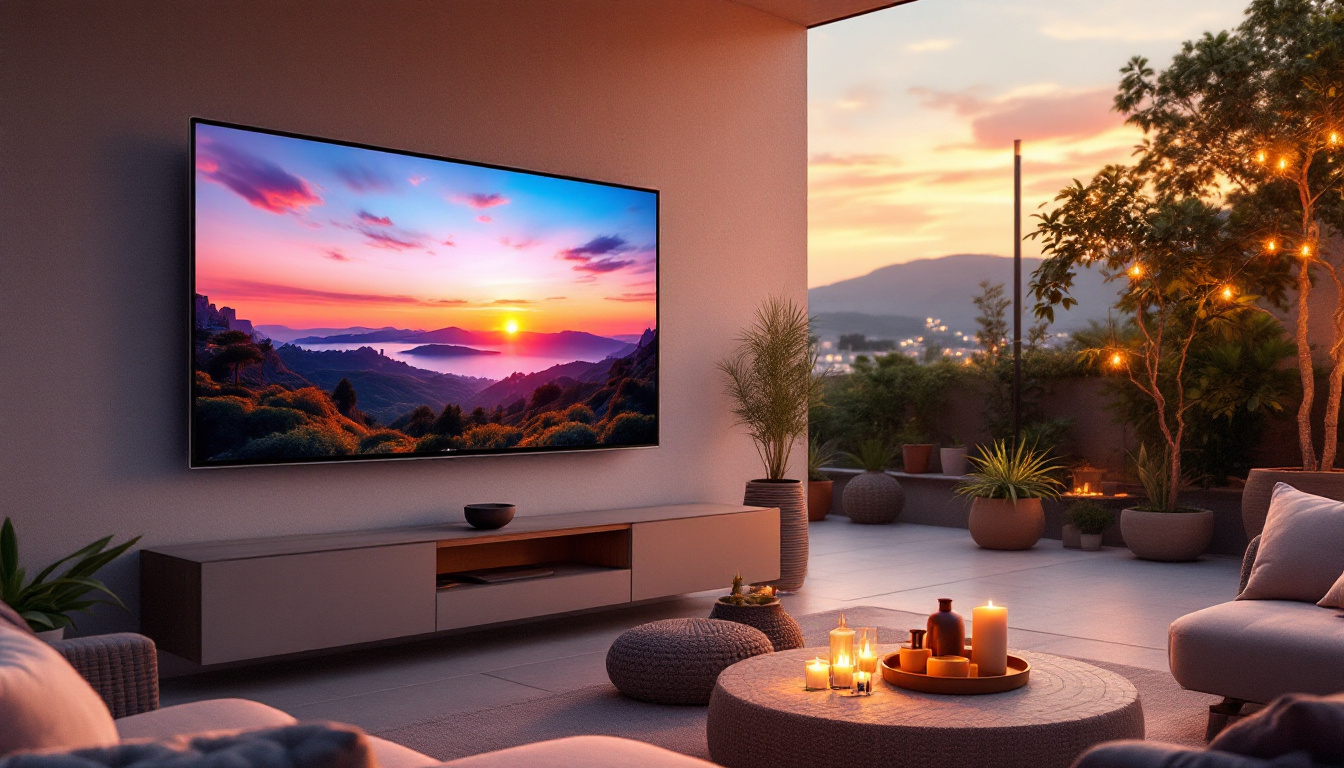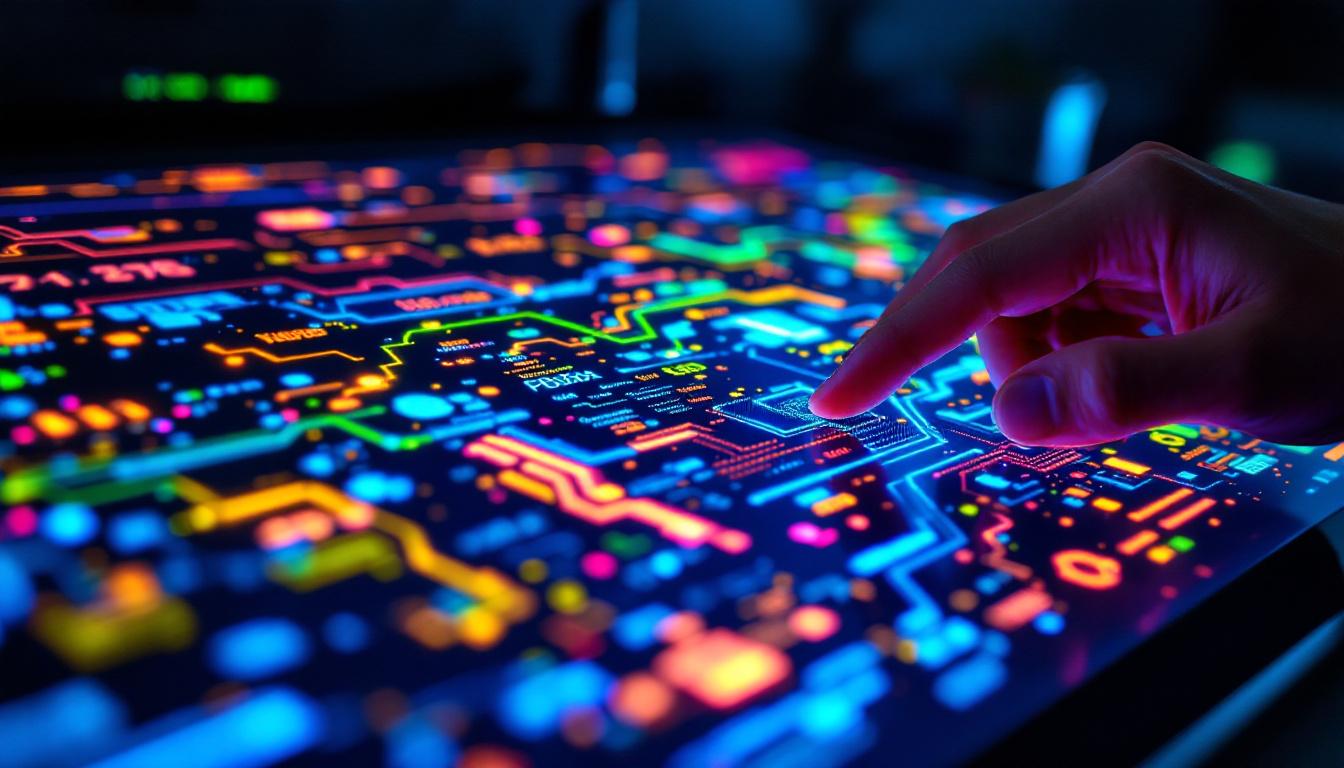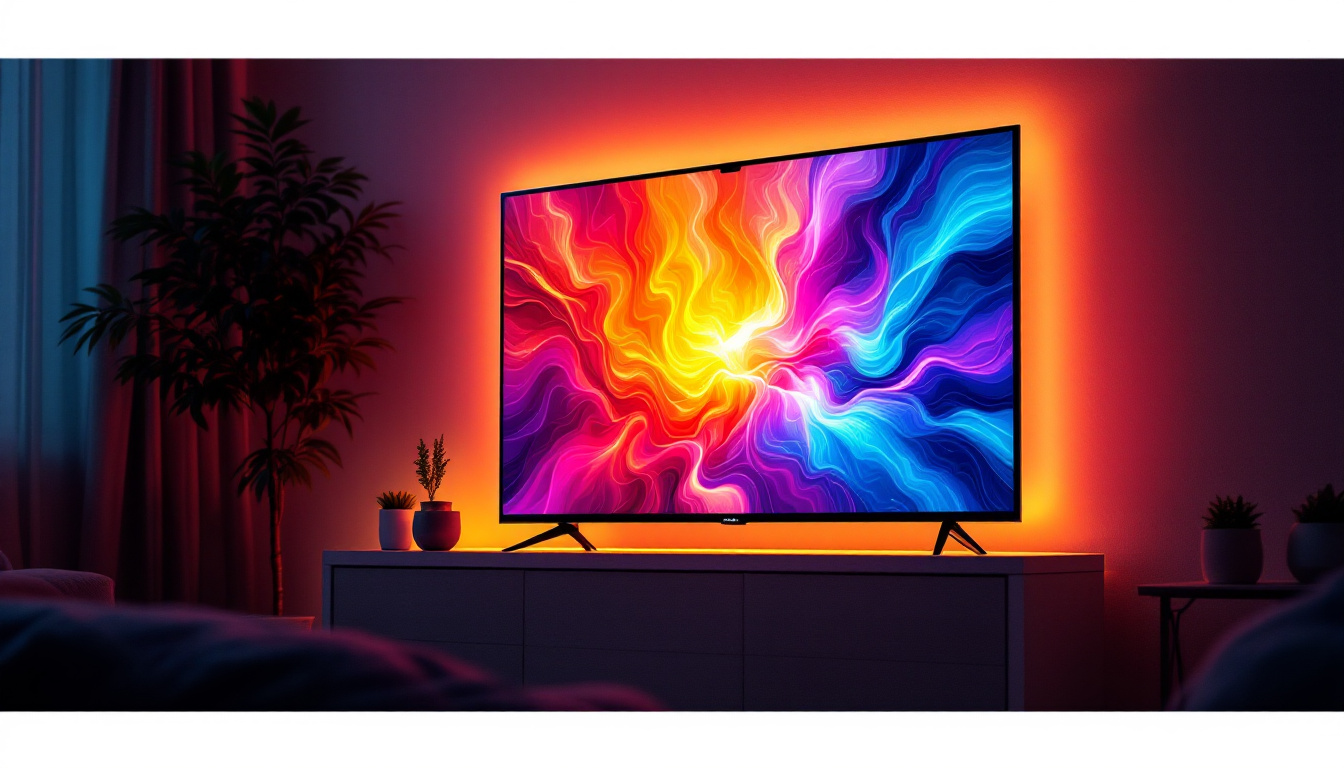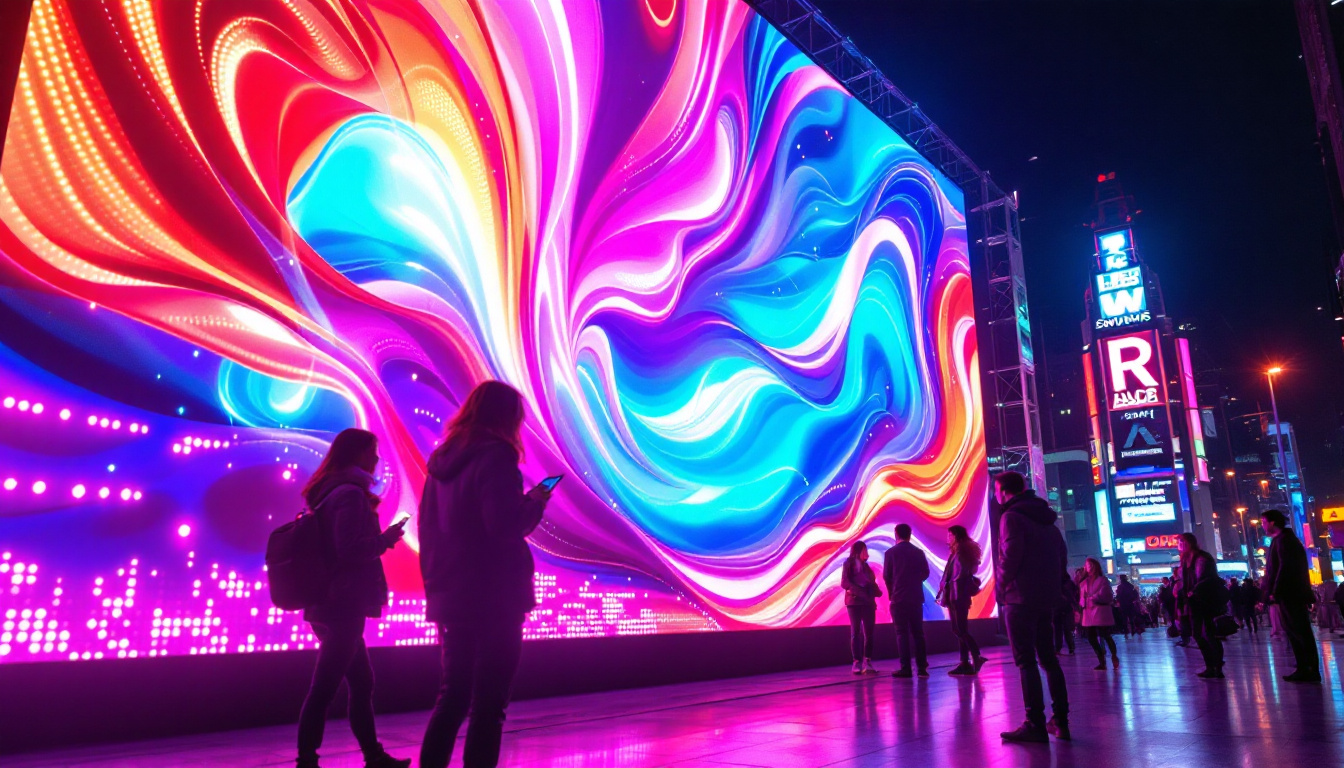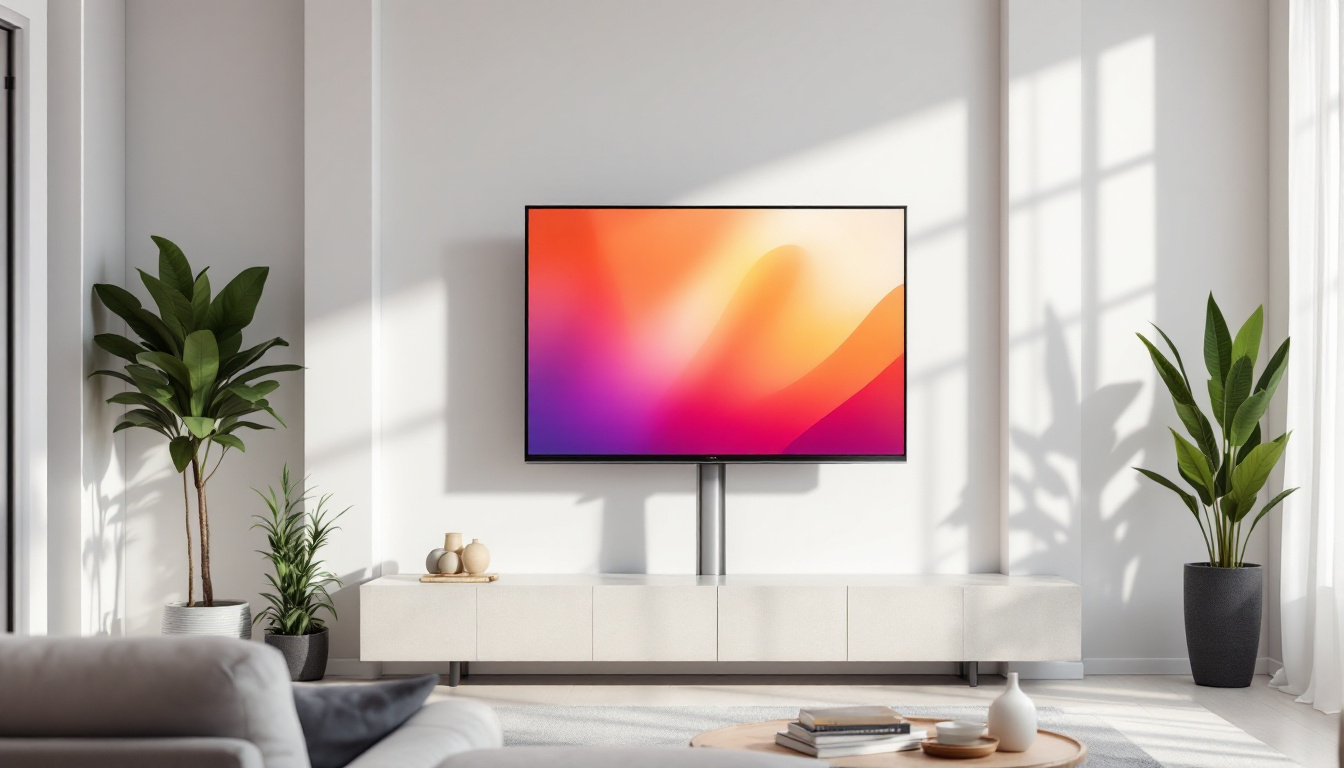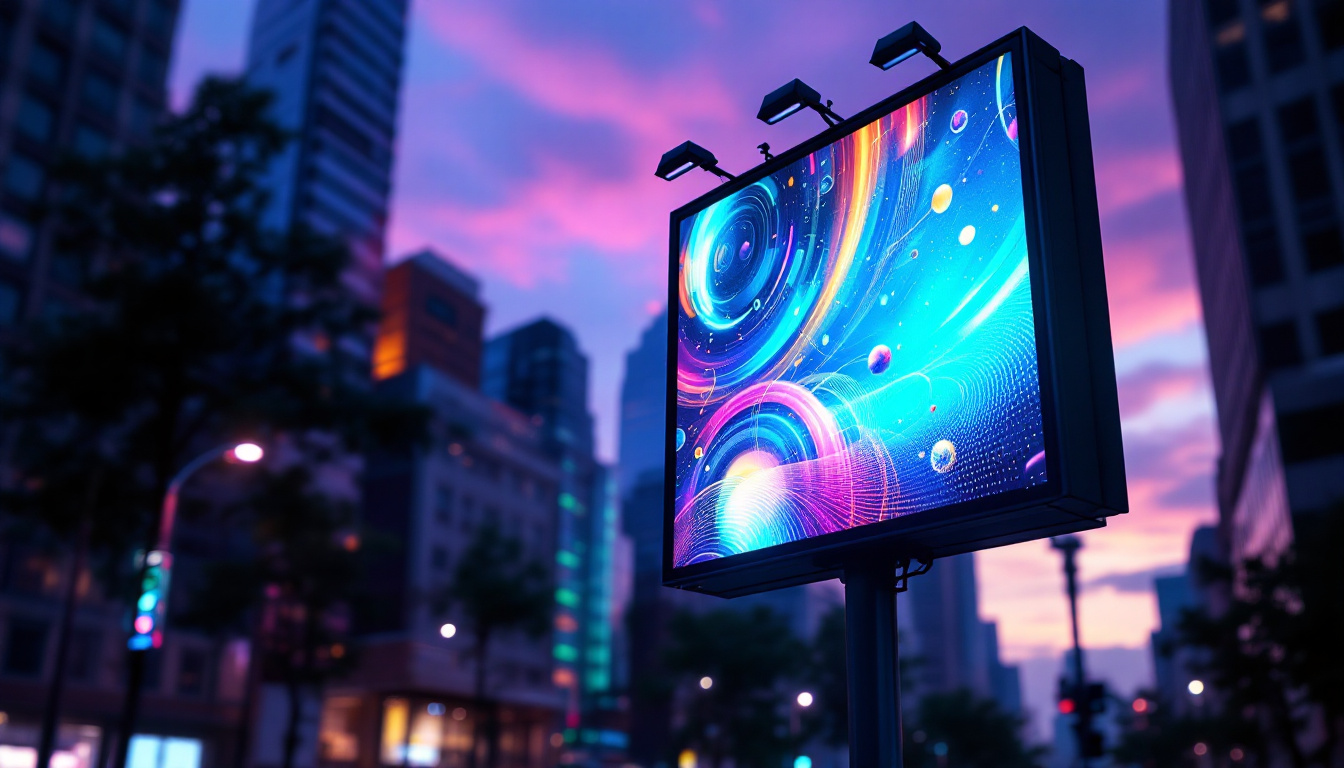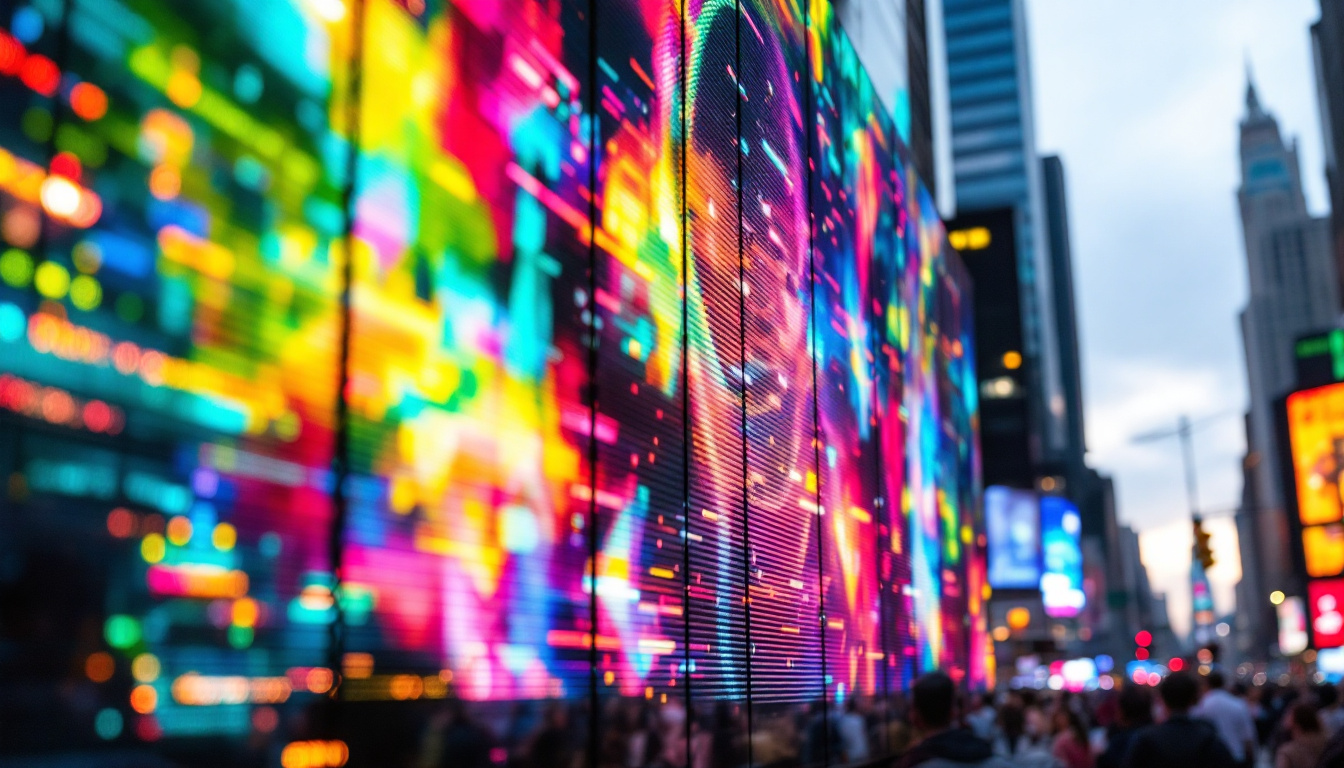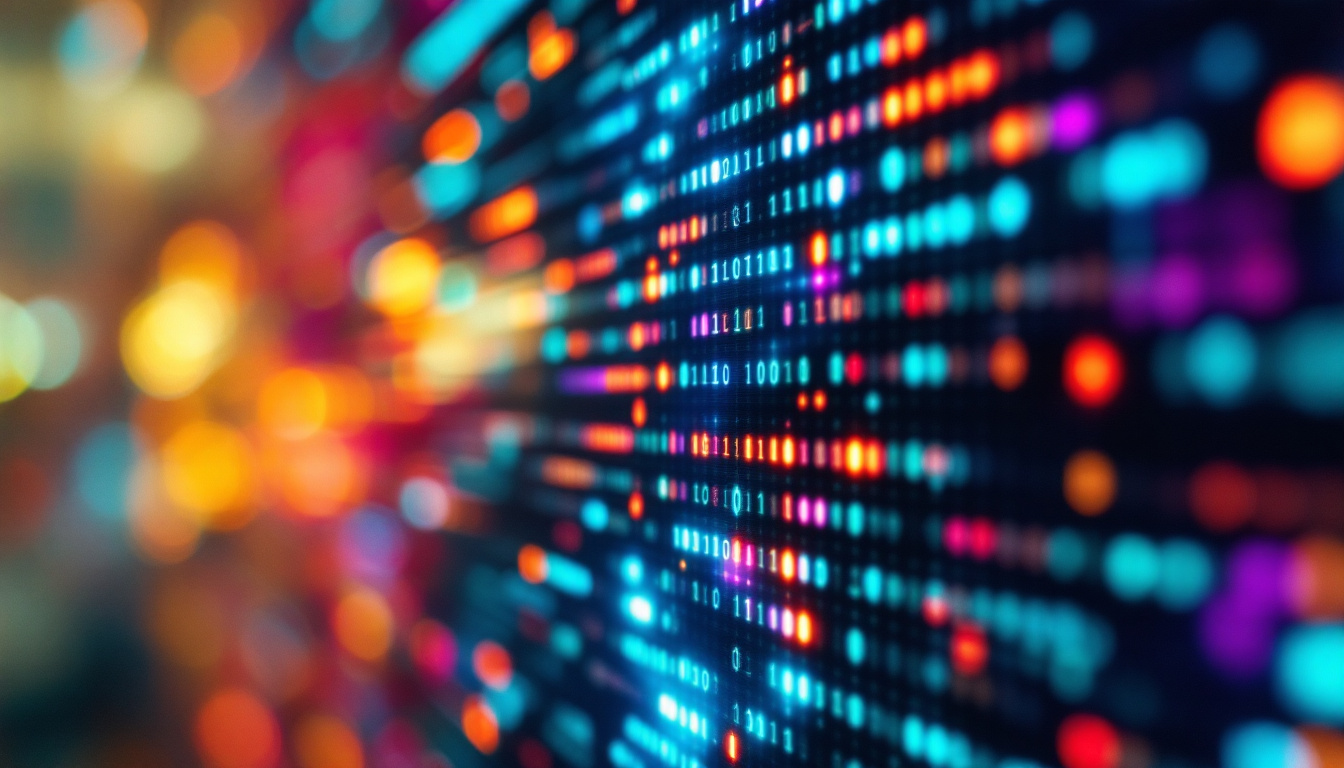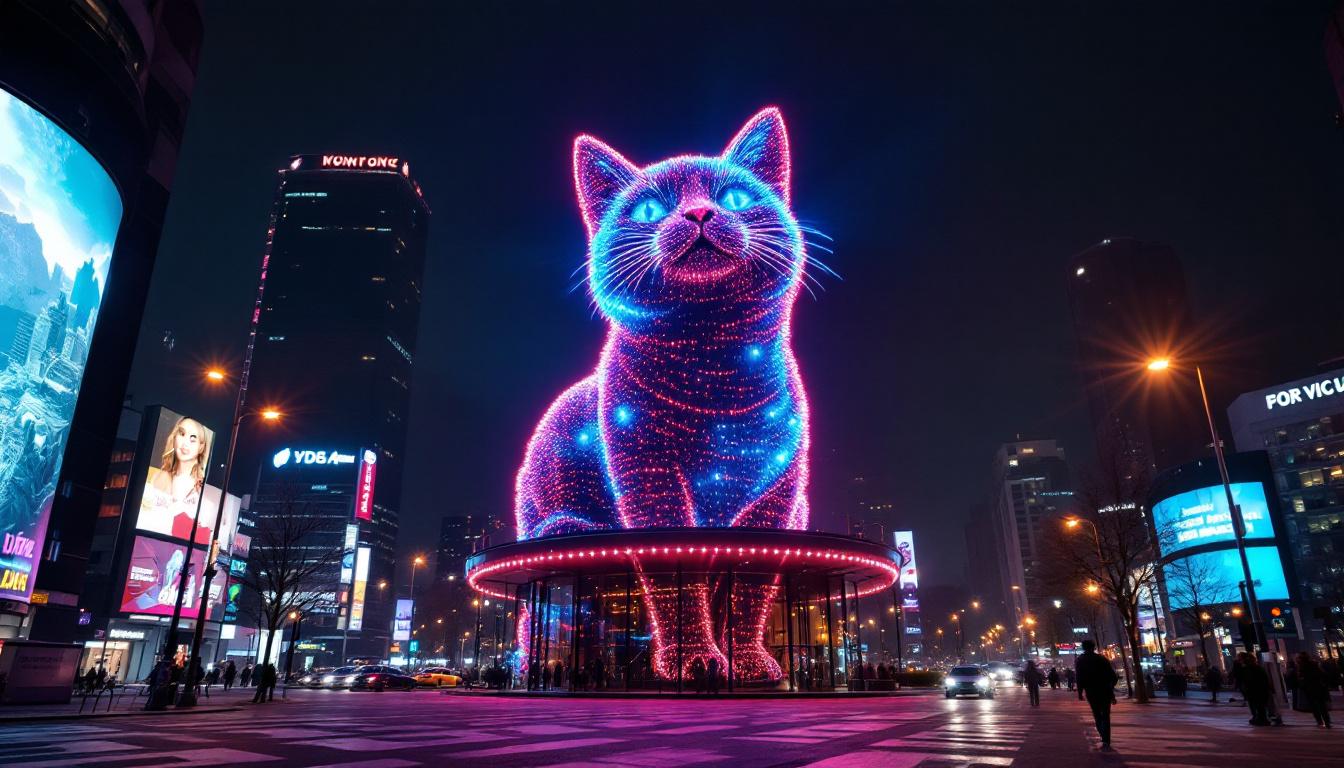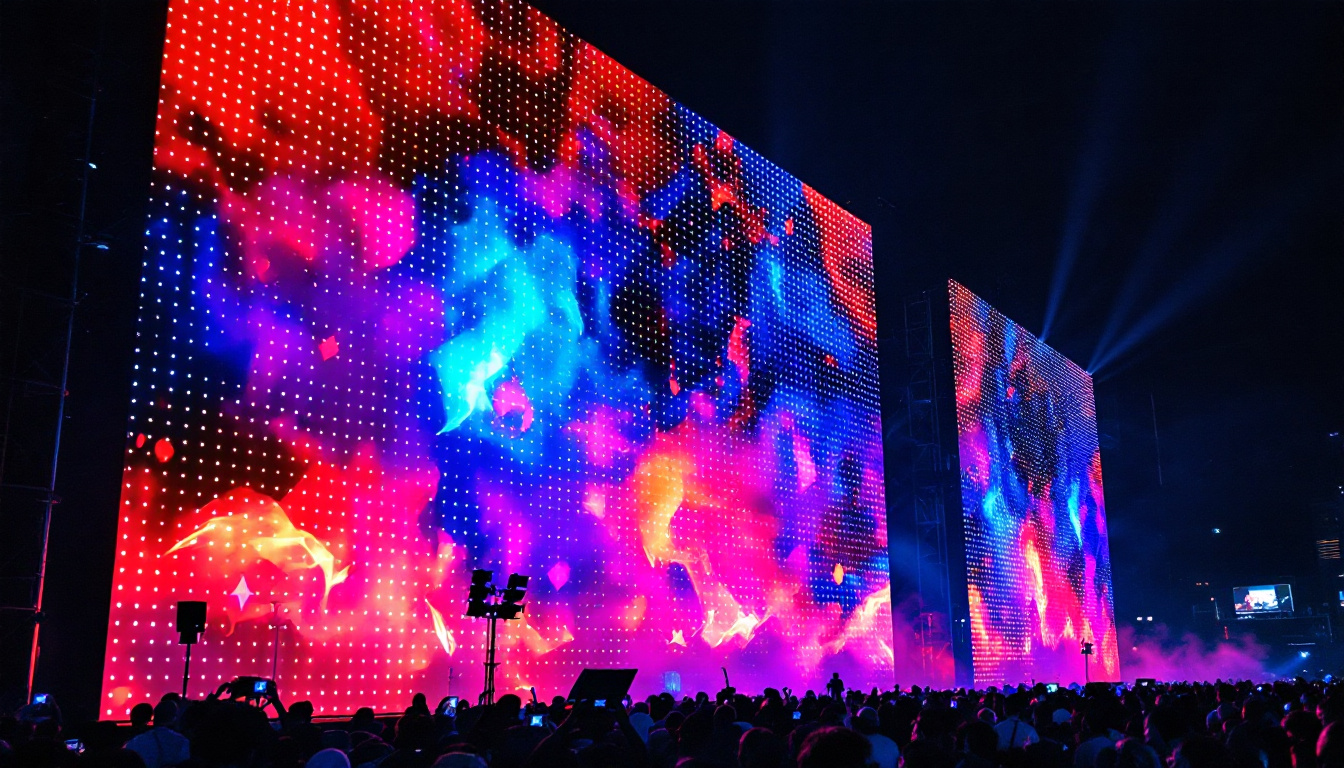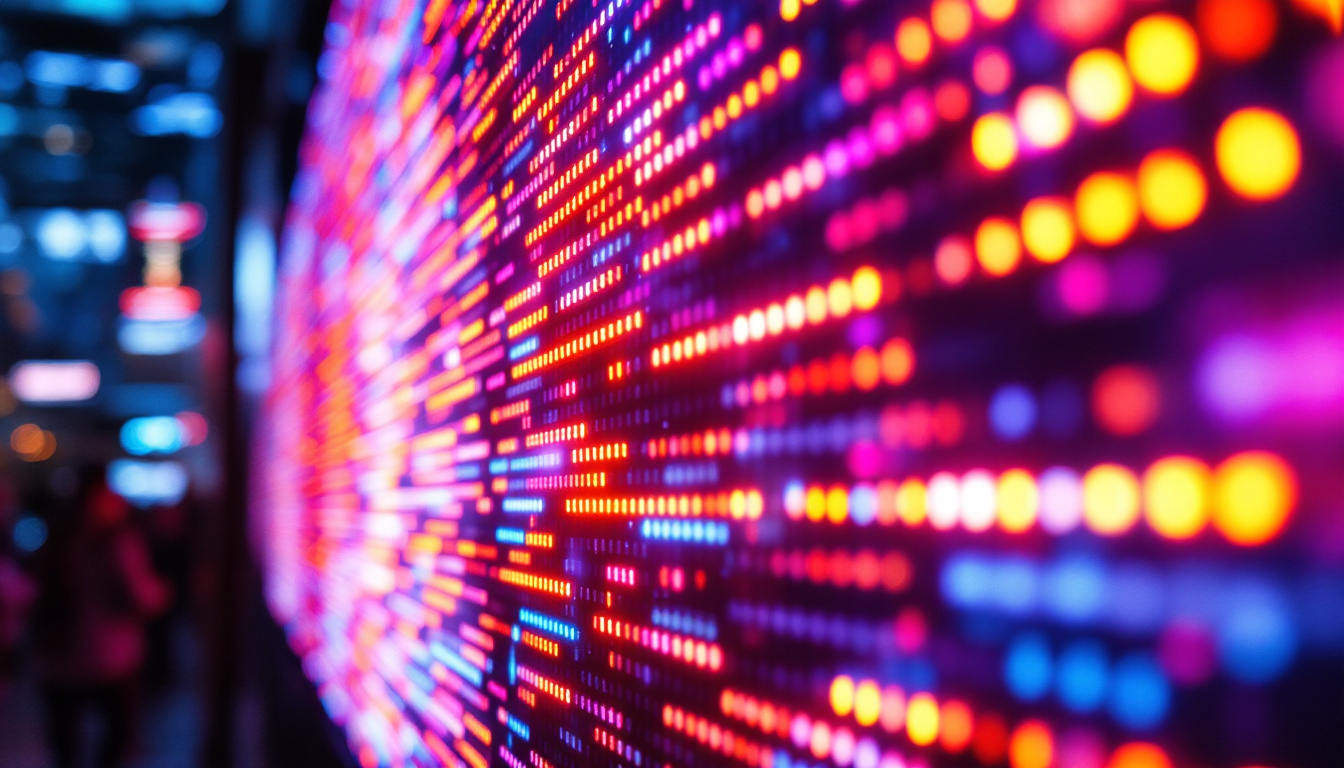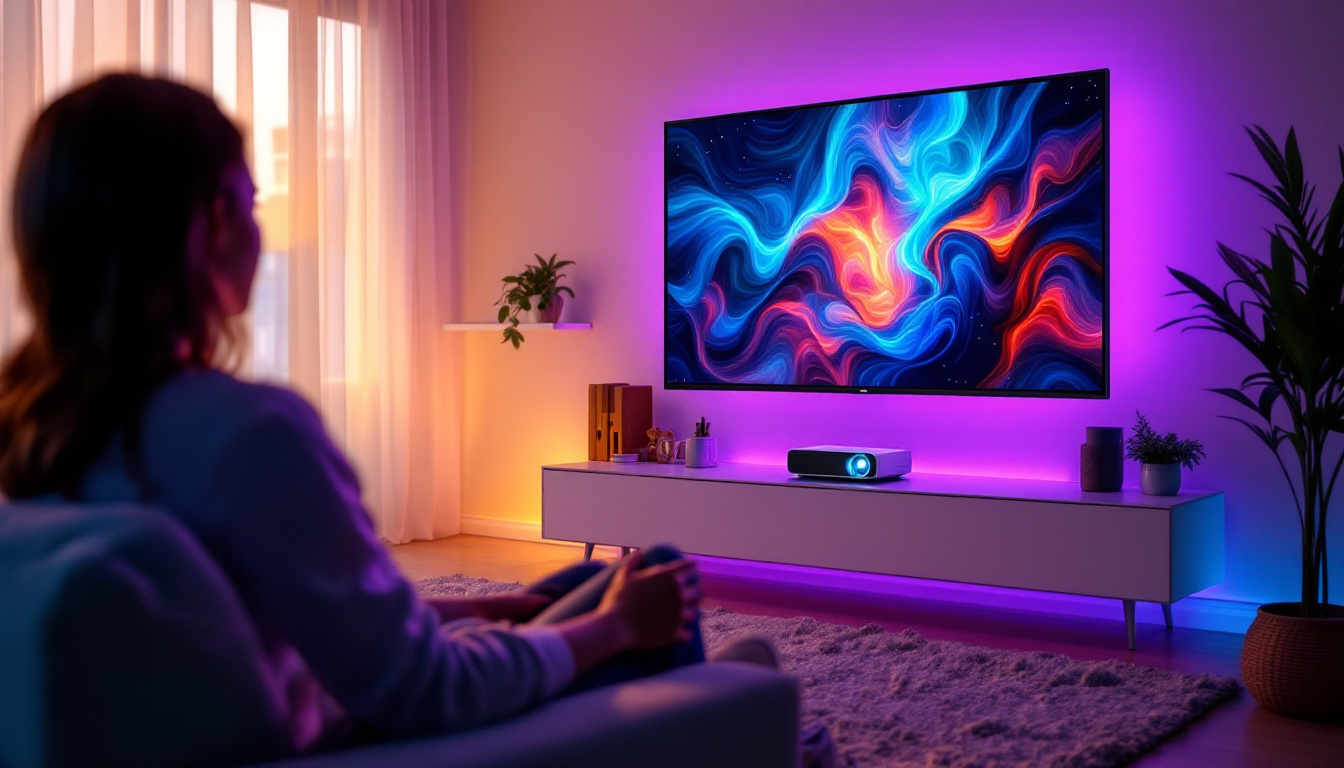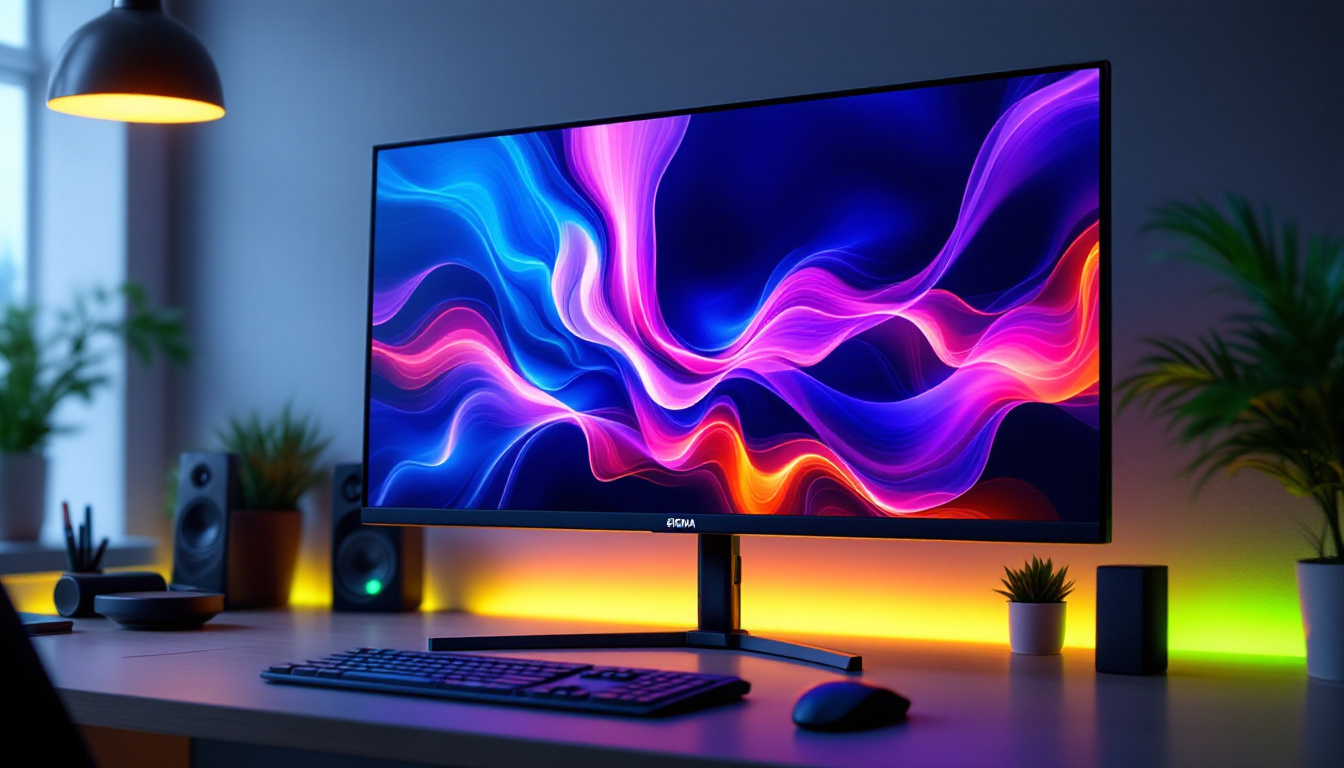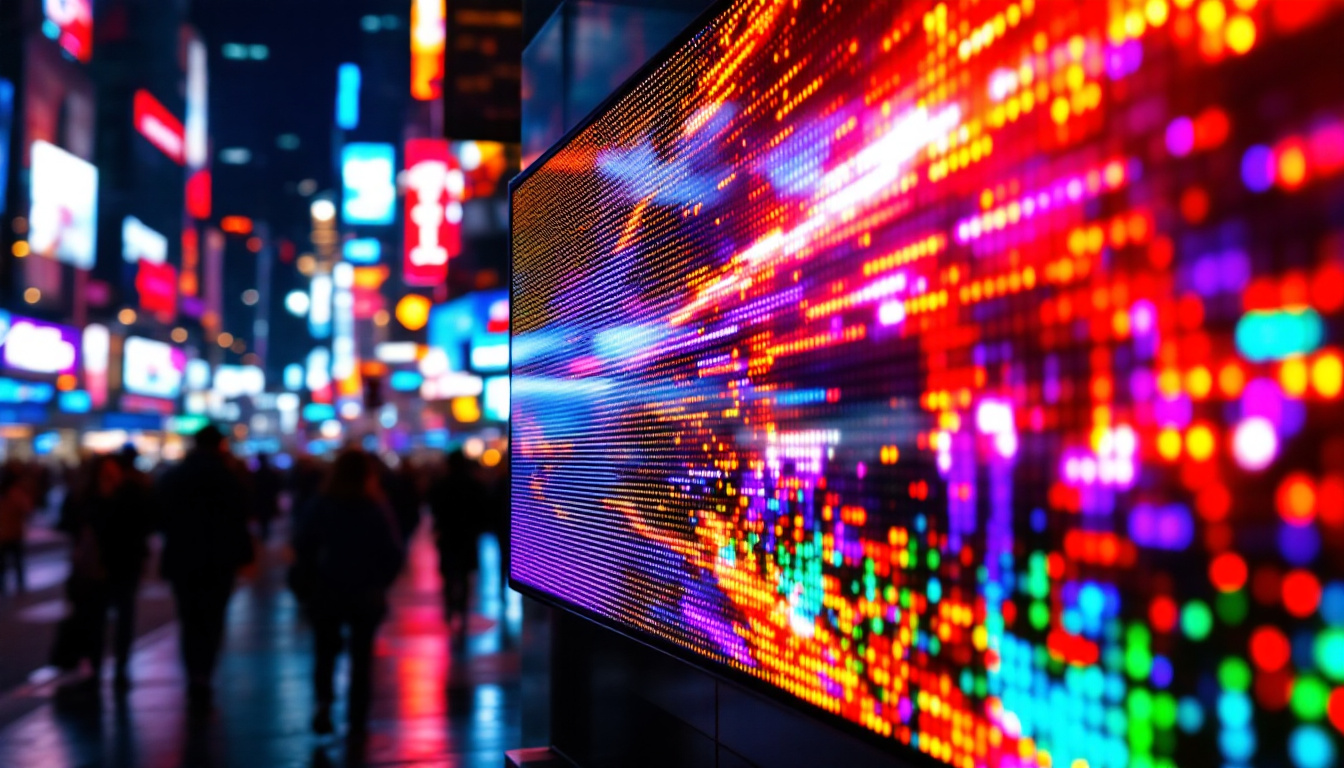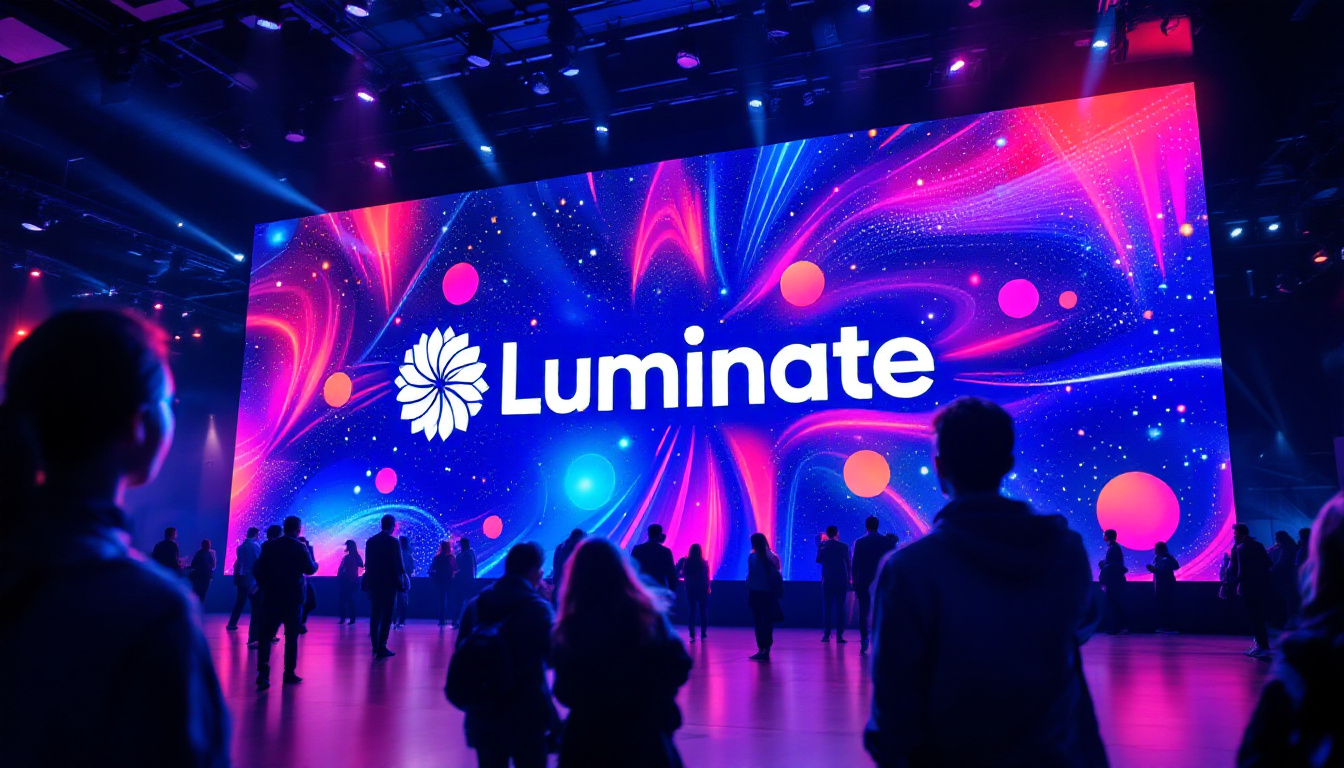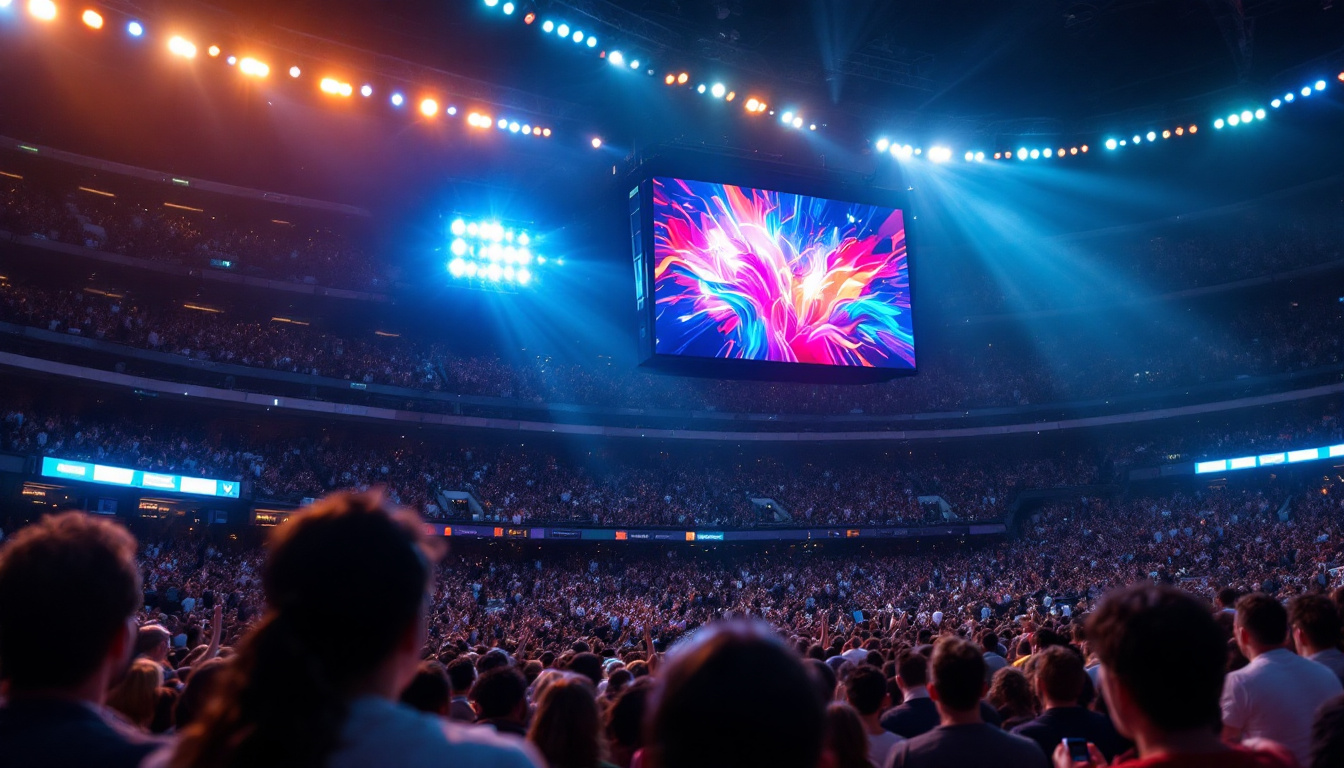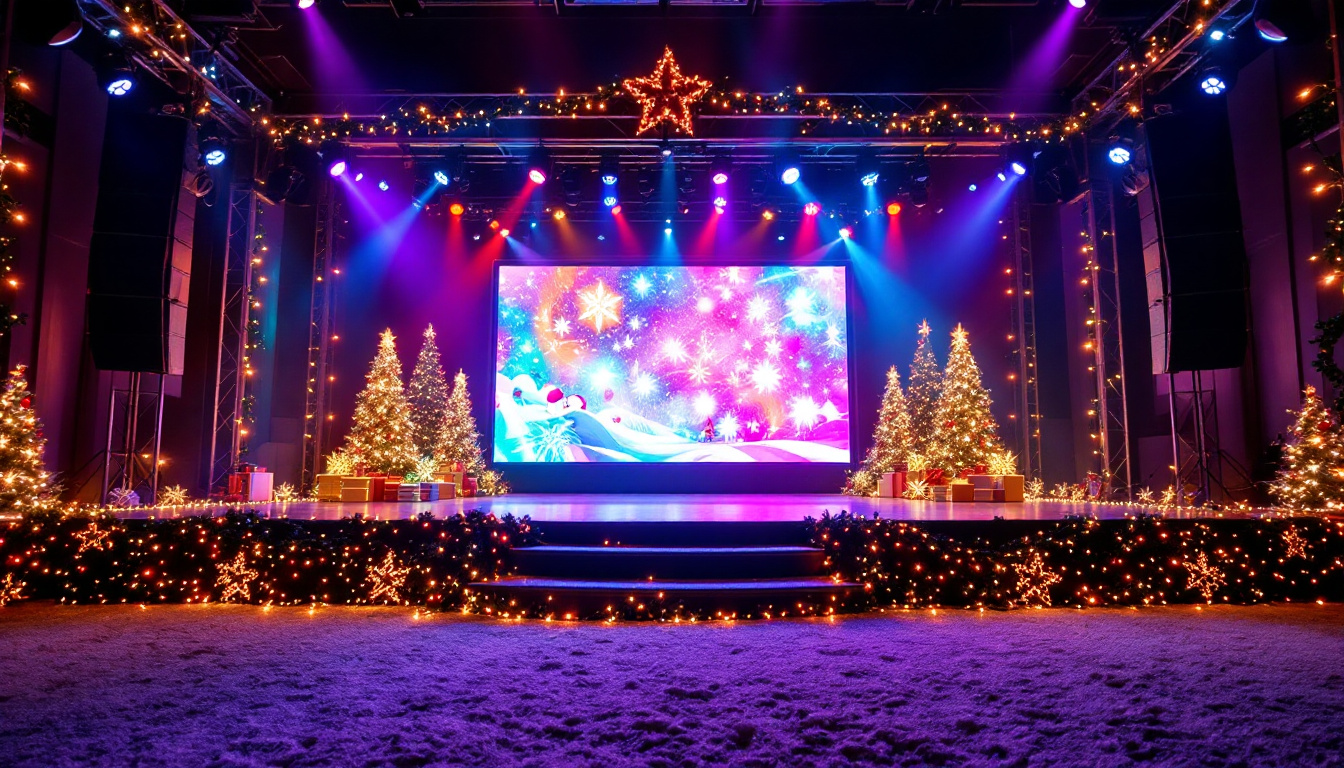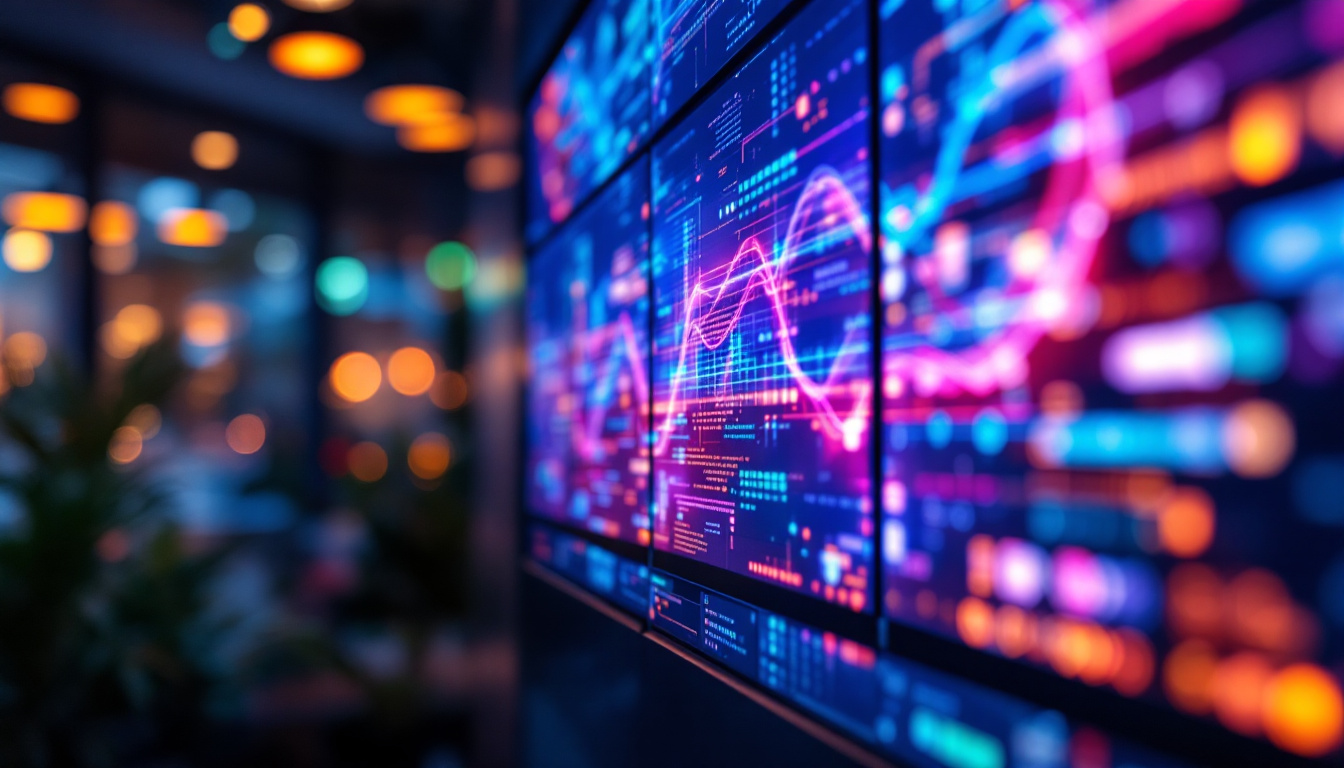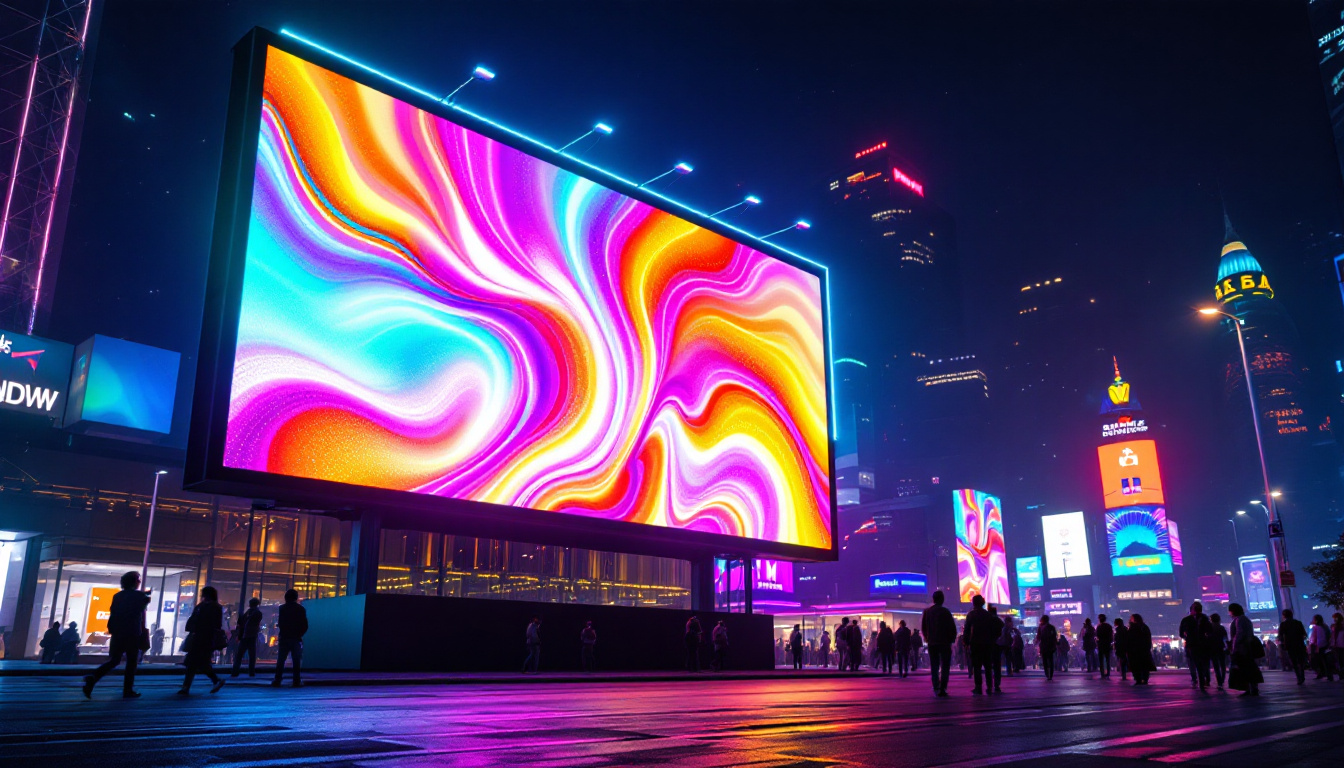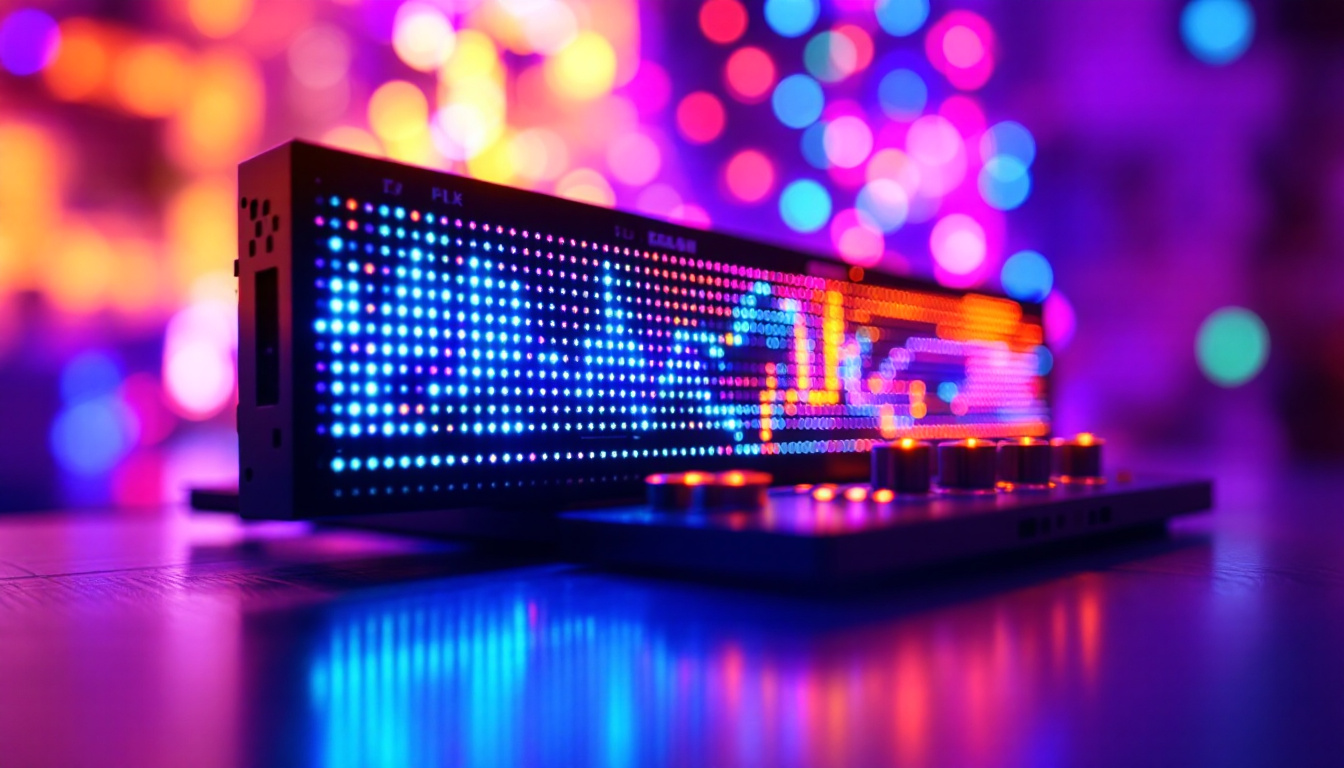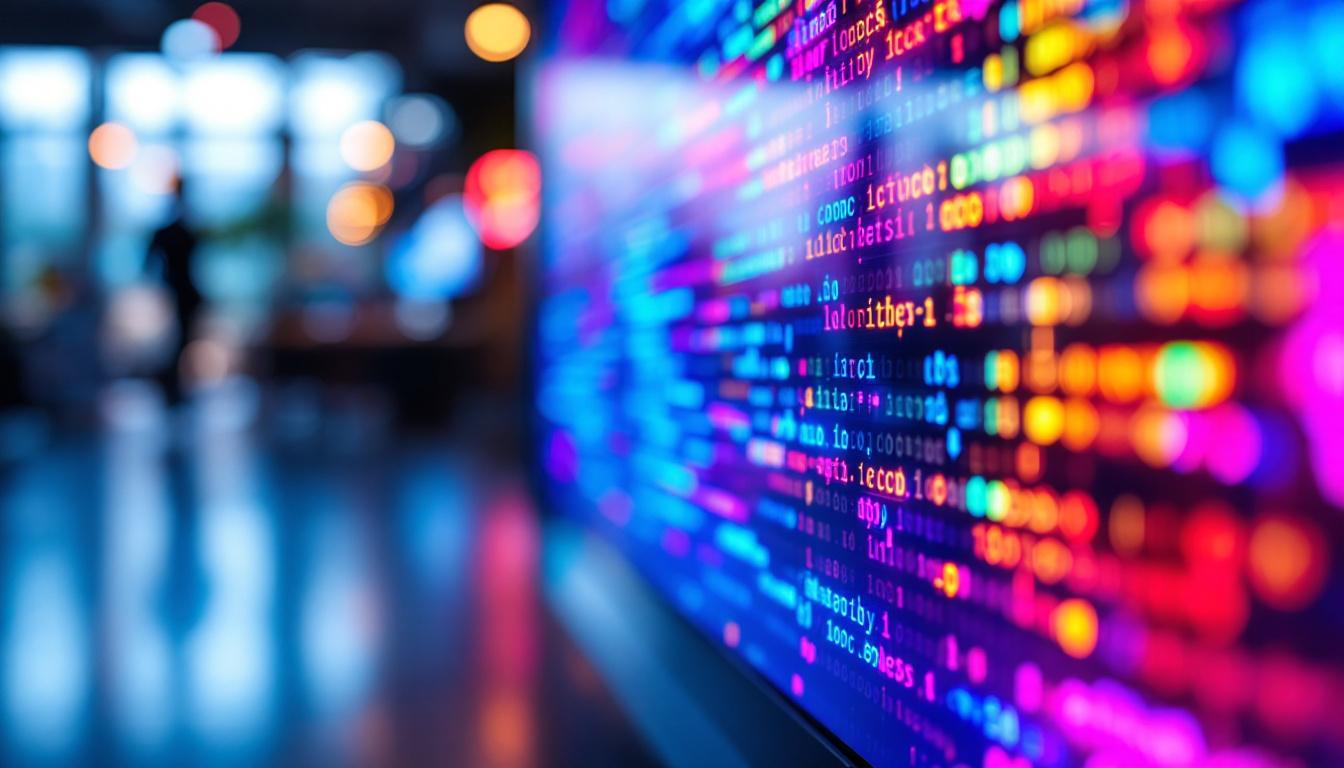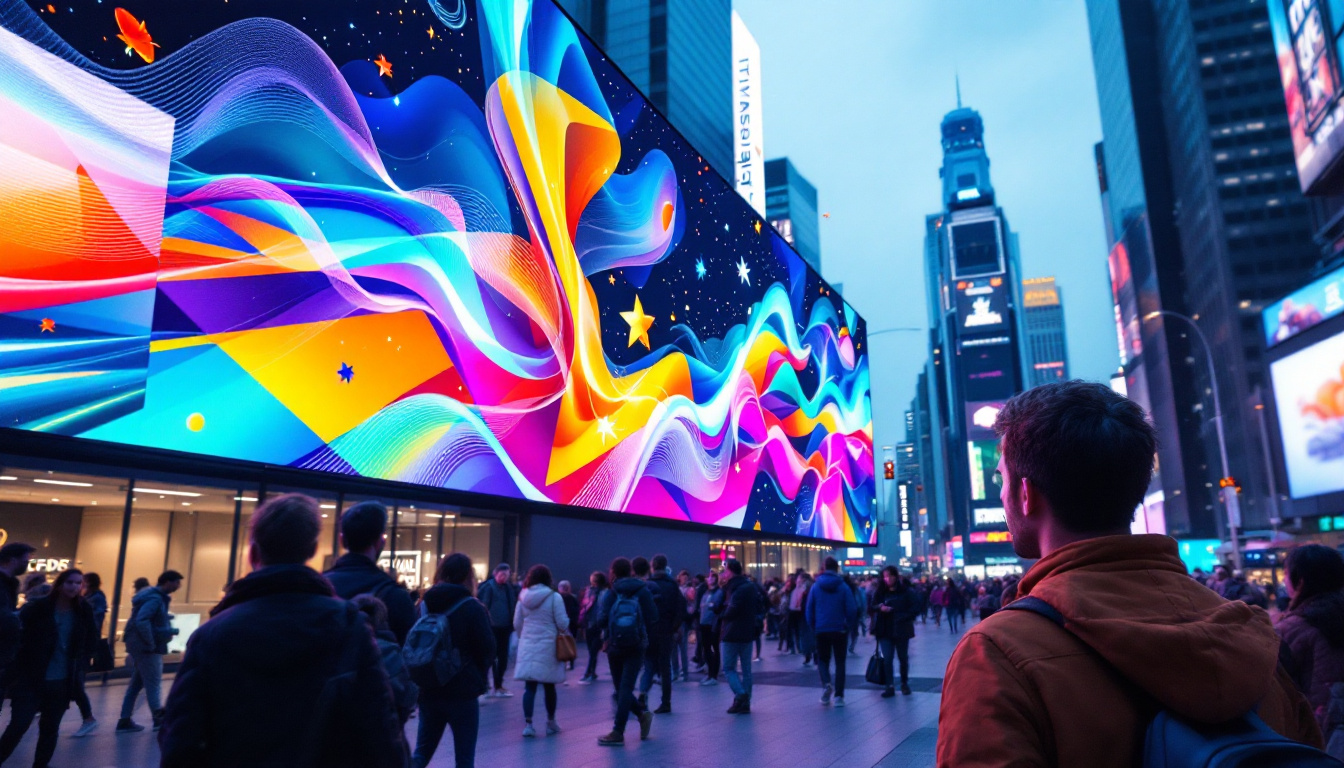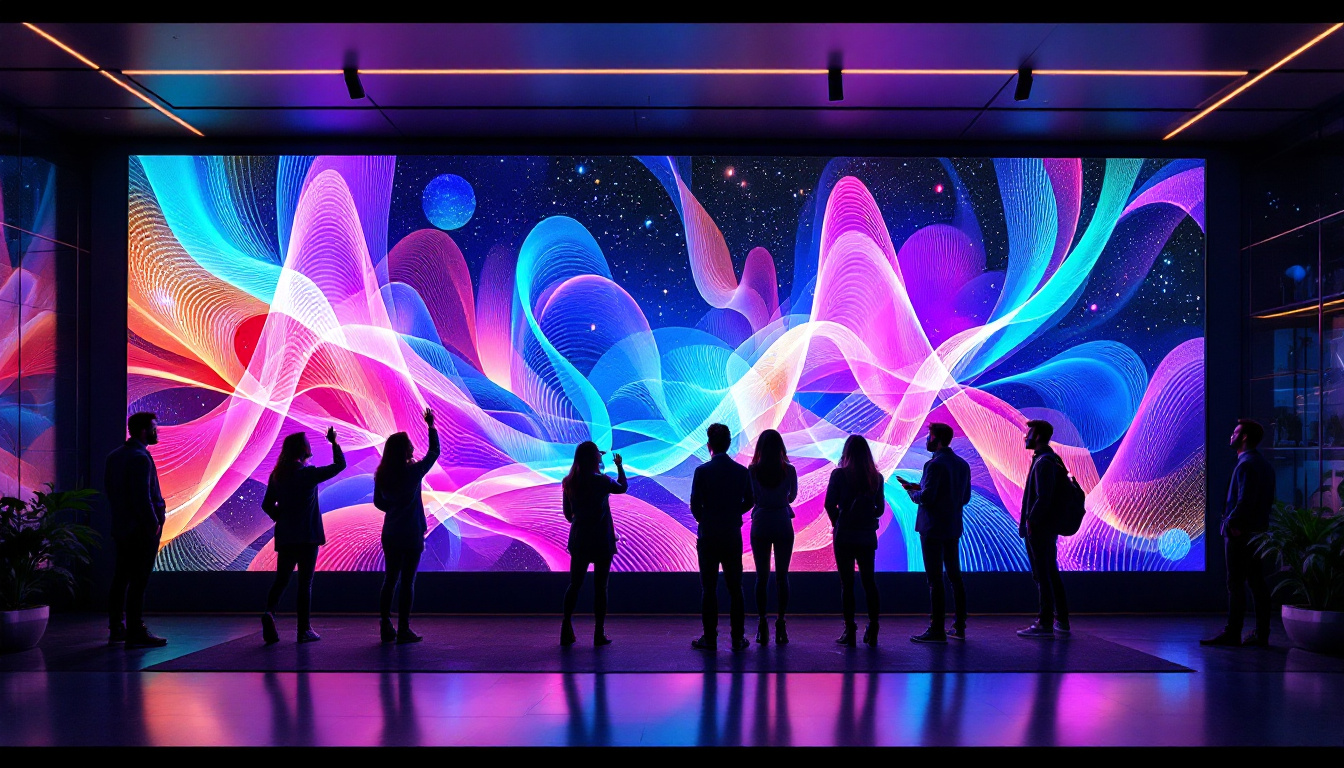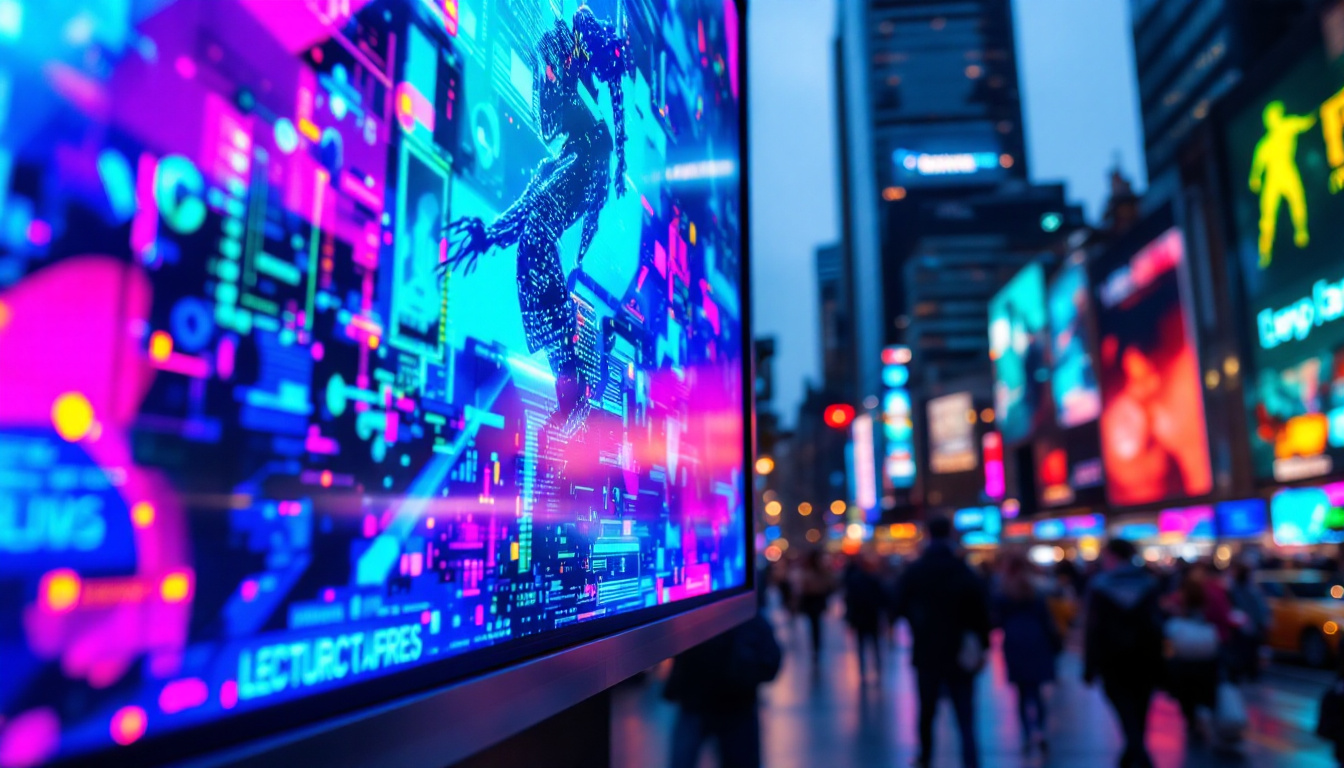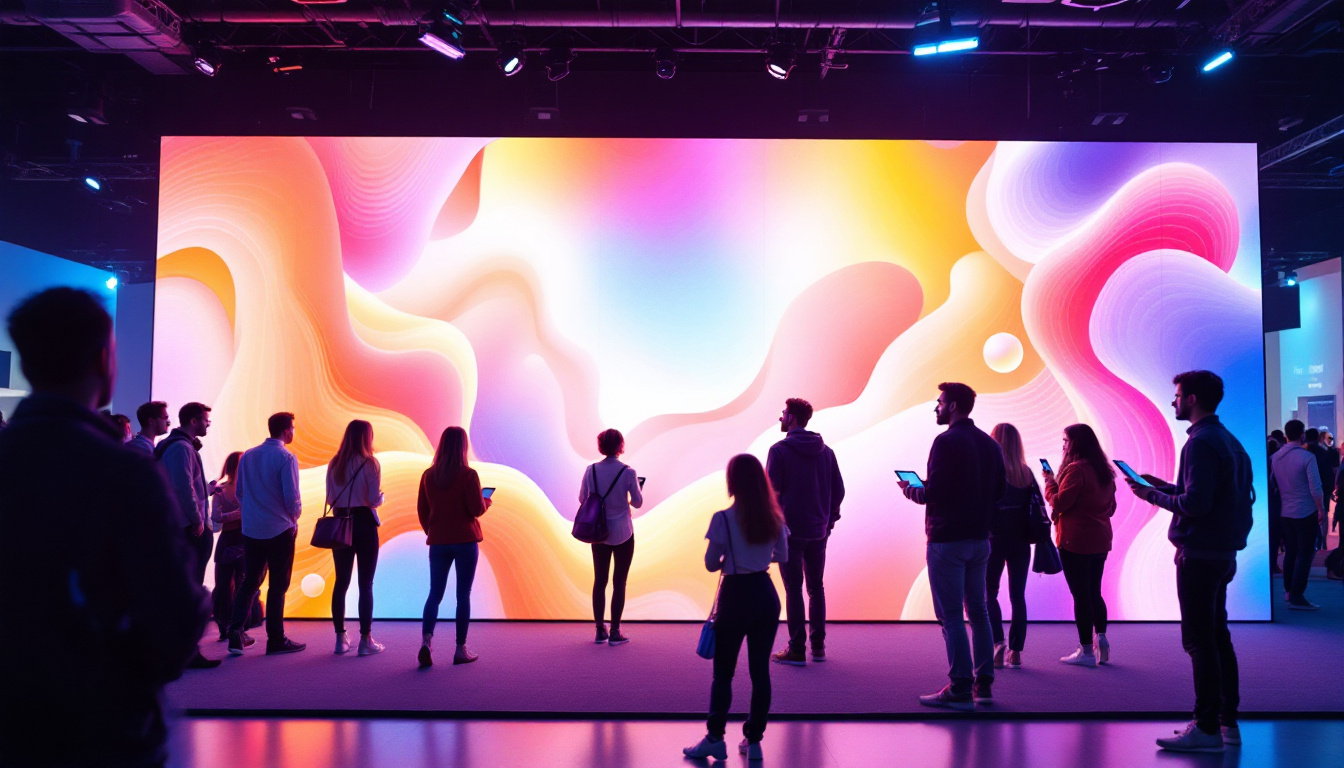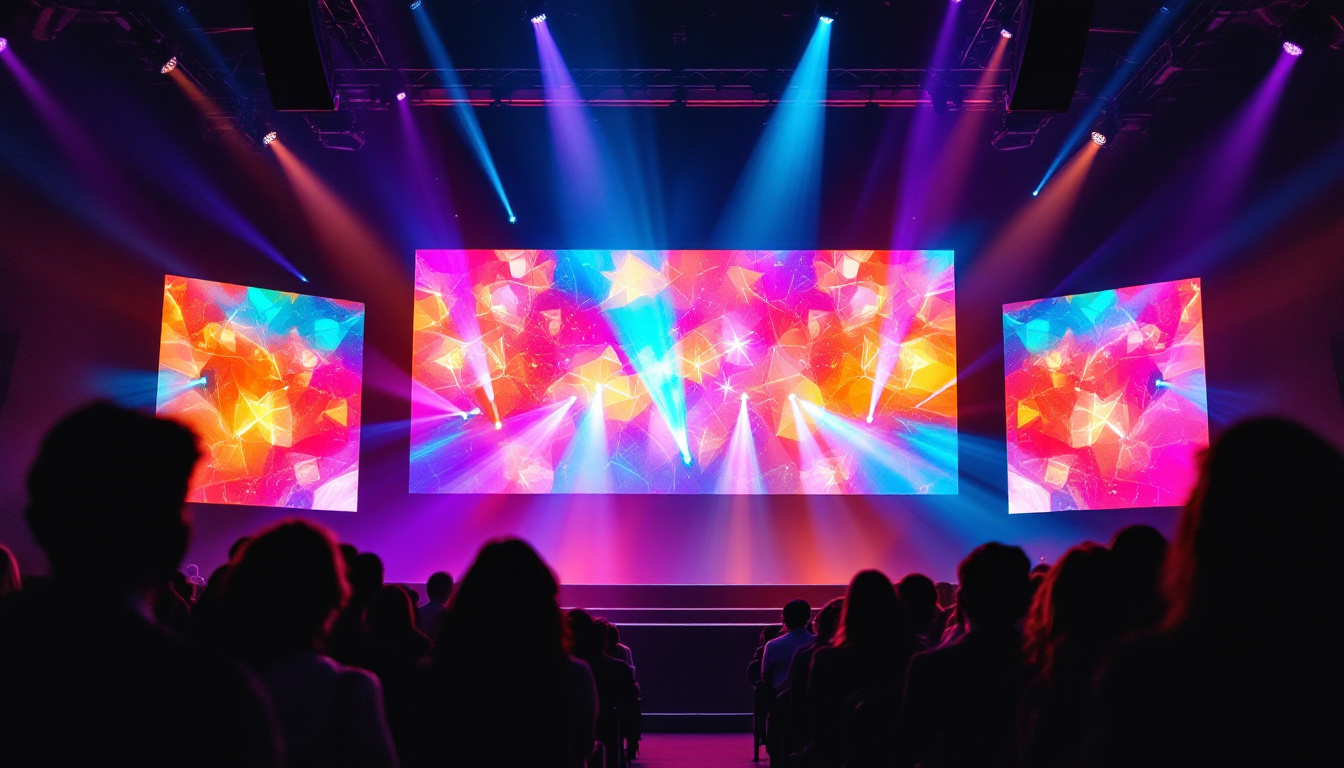In the rapidly evolving world of digital signage, LED displays have emerged as a dominant force. Their vibrant colors, energy efficiency, and versatility make them a preferred choice for businesses looking to enhance their marketing efforts. This article delves into the intricacies of LED displays within the digital signage vertical, exploring their technology, applications, benefits, and future trends.
Understanding LED Technology
What is an LED Display?
LED, or Light Emitting Diode, displays are made up of numerous small diodes that emit light when an electric current passes through them. This technology allows for the creation of vivid images and videos, making LED displays ideal for capturing attention in crowded environments. Unlike traditional LCD screens, LED displays can achieve higher brightness levels and better contrast ratios, which are crucial for visibility in outdoor settings.
LED displays come in various forms, including direct view and backlit configurations. Direct view LED displays consist of individual pixels made from LEDs, while backlit displays use LEDs to illuminate a liquid crystal display (LCD) panel. Each type has its own set of advantages, catering to different use cases and environments. For instance, direct view LED displays are often utilized in large-scale outdoor advertising, sporting events, and concerts, where their ability to produce bright and dynamic visuals can effectively engage audiences. In contrast, backlit LED displays are commonly found in televisions and computer monitors, providing a more traditional viewing experience with enhanced color accuracy and energy efficiency.
How LED Displays Work
The operation of an LED display relies on a matrix of pixels, each pixel composed of red, green, and blue (RGB) diodes. By adjusting the intensity of each diode, an extensive range of colors can be produced. This RGB model allows for the creation of high-definition images and videos, making LED displays a popular choice for advertising and information dissemination. The precision with which these diodes can be controlled contributes to the sharpness and clarity of the visuals, making them ideal for both close-up and long-distance viewing.
Furthermore, LED displays can be controlled through various software solutions, allowing users to schedule content, manage multiple displays, and even integrate real-time data feeds. This flexibility enhances the effectiveness of digital signage campaigns, enabling businesses to tailor their messaging to specific audiences and contexts. For example, retail stores can utilize LED displays to showcase promotions or new arrivals, dynamically changing the content based on customer traffic patterns or time of day. Additionally, advancements in LED technology have led to the development of flexible and transparent displays, opening up new possibilities for creative applications in architecture and interior design, where screens can blend seamlessly into their surroundings while still delivering impactful visual content.
Applications of LED Displays
Retail Environments
In retail, LED displays serve as powerful marketing tools. They can be used to showcase promotions, highlight new products, or create immersive brand experiences. The dynamic nature of LED displays allows retailers to change their content frequently, ensuring that customers are always engaged with fresh and relevant information.
Moreover, LED displays can be strategically placed in high-traffic areas, such as store entrances or checkout lines, maximizing visibility and impact. The ability to display high-quality visuals helps brands stand out in competitive markets, ultimately driving foot traffic and sales.
Transportation Hubs
Transportation hubs, such as airports and train stations, benefit significantly from LED displays. They are used for displaying flight information, schedules, and important announcements. The high brightness and clarity of LED technology ensure that information is easily readable, even in bright sunlight or from a distance.
Additionally, LED displays can enhance the passenger experience by providing entertainment, advertisements, or wayfinding information. This not only keeps travelers informed but also creates a more enjoyable atmosphere in often stressful environments.
Corporate Settings
In corporate environments, LED displays are increasingly used for internal communications and presentations. They can serve as digital bulletin boards, displaying important announcements, employee recognition, or company metrics. The ability to update content in real-time ensures that employees are always informed and engaged.
Moreover, LED displays can be utilized in conference rooms for presentations, video conferencing, and collaborative work. Their large size and high resolution make them ideal for sharing detailed information, fostering better communication among teams.
Benefits of LED Displays
Energy Efficiency
One of the most significant advantages of LED displays is their energy efficiency. Compared to traditional display technologies, LEDs consume less power while delivering superior brightness and color quality. This not only reduces operational costs but also aligns with sustainability goals, making LED displays an eco-friendly choice for businesses.
Furthermore, the longevity of LED technology means that displays can last for many years with minimal maintenance, further enhancing their cost-effectiveness. This durability is particularly beneficial for businesses that rely on continuous operation, as it minimizes downtime and replacement costs.
High Visibility and Quality
LED displays are known for their exceptional visibility, even in challenging lighting conditions. Their ability to produce bright, vibrant colors ensures that content remains eye-catching and engaging. This quality is particularly important for outdoor displays, where sunlight can wash out the visibility of other display types.
Additionally, the high resolution of LED displays allows for detailed images and text, making them suitable for a wide range of applications. Whether used for advertising, information dissemination, or entertainment, the quality of LED displays significantly enhances the viewer’s experience.
Flexibility and Customization
Another notable benefit of LED displays is their flexibility. They can be configured in various shapes and sizes, allowing businesses to create unique installations that fit their specific needs. Whether it’s a large video wall or a small digital sign, LED technology can adapt to different environments and requirements.
Moreover, content can be easily customized and updated, enabling businesses to respond quickly to changing circumstances or campaigns. This adaptability is crucial in today’s fast-paced market, where timely and relevant messaging can make a significant difference.
Challenges and Considerations
Initial Investment
While LED displays offer numerous benefits, the initial investment can be a barrier for some businesses. The cost of high-quality LED technology can be significant, particularly for large installations. However, it is important to consider the long-term savings associated with energy efficiency and durability, which can offset the initial expenditure over time.
To mitigate costs, businesses can explore leasing options or phased implementations, allowing them to spread the investment over a more extended period. This approach can make LED technology more accessible while still reaping its benefits.
Content Management
Effective content management is crucial for maximizing the impact of LED displays. Businesses must invest in software solutions that allow for easy content creation, scheduling, and monitoring. Without a robust content strategy, even the most advanced displays may fail to engage audiences effectively.
Moreover, businesses should consider the skills and training required to manage LED displays. Ensuring that staff are equipped with the necessary knowledge to operate and update displays can enhance the overall effectiveness of digital signage efforts.
Environmental Factors
Environmental factors can also impact the performance and longevity of LED displays, particularly those used outdoors. Exposure to extreme weather conditions, such as heavy rain, snow, or intense heat, can affect the display’s functionality. It is essential to choose displays that are rated for outdoor use and to implement protective measures where necessary.
Additionally, regular maintenance is crucial to ensure optimal performance. This includes cleaning the display, checking connections, and updating software to prevent issues that could affect visibility and reliability.
Future Trends in LED Displays
Advancements in Technology
The future of LED displays is bright, with ongoing advancements in technology promising to enhance their capabilities further. Innovations such as microLED and miniLED technology are paving the way for even higher resolutions, improved color accuracy, and better energy efficiency.
These advancements will enable businesses to create even more immersive experiences, pushing the boundaries of what is possible with digital signage. As technology continues to evolve, LED displays will likely become an integral part of various industries, from retail to entertainment.
Integration with IoT and AI
As the Internet of Things (IoT) and artificial intelligence (AI) continue to gain traction, the integration of these technologies with LED displays is expected to transform digital signage. Smart displays that can analyze viewer behavior and preferences will allow businesses to deliver personalized content in real-time.
This level of customization can significantly enhance the effectiveness of marketing campaigns, as businesses can tailor their messaging to specific audiences based on data-driven insights. As a result, LED displays will become even more powerful tools for engagement and conversion.
Sustainability Initiatives
With growing awareness of environmental issues, sustainability will play an increasingly important role in the development and deployment of LED displays. Manufacturers are likely to focus on creating eco-friendly products, utilizing recyclable materials, and implementing energy-efficient technologies.
Businesses that prioritize sustainability in their digital signage efforts will not only contribute to environmental conservation but also appeal to a growing consumer base that values eco-conscious practices. This alignment with sustainability goals can enhance brand reputation and customer loyalty.
Conclusion
LED displays have revolutionized the digital signage landscape, offering unparalleled visibility, flexibility, and energy efficiency. Their diverse applications across various industries highlight their versatility and effectiveness in capturing audience attention. While challenges such as initial investment and content management exist, the long-term benefits of LED technology make it a worthwhile consideration for businesses.
As advancements in technology continue to shape the future of LED displays, businesses must stay informed about emerging trends and innovations. By embracing these changes and integrating LED displays into their marketing strategies, organizations can enhance their communication efforts and drive engagement in an increasingly digital world.
Discover LumenMatrix’s Innovative LED Solutions
Ready to elevate your brand’s presence and captivate your audience with the latest in LED display technology? Look no further than LumenMatrix. Our comprehensive range of solutions, from Indoor and Outdoor LED Wall Displays to specialized options like Vehicle, Sports, and Floor LED Displays, is designed to meet your unique needs. Embrace the future with our Custom, All-in-One, and Transparent LED Displays, and join the revolution of visual communication. Check out LumenMatrix LED Display Solutions today and transform your digital signage into unforgettable visual experiences.

